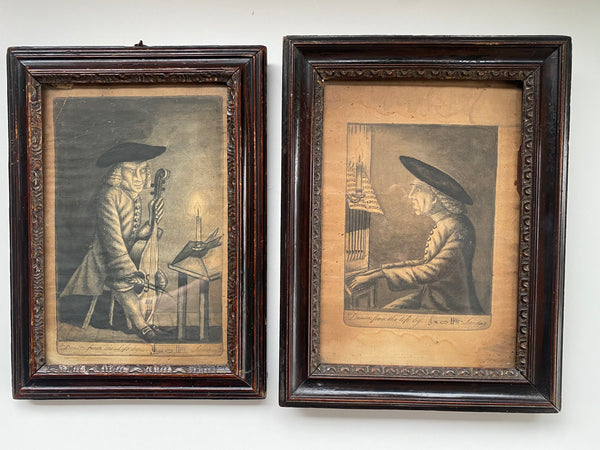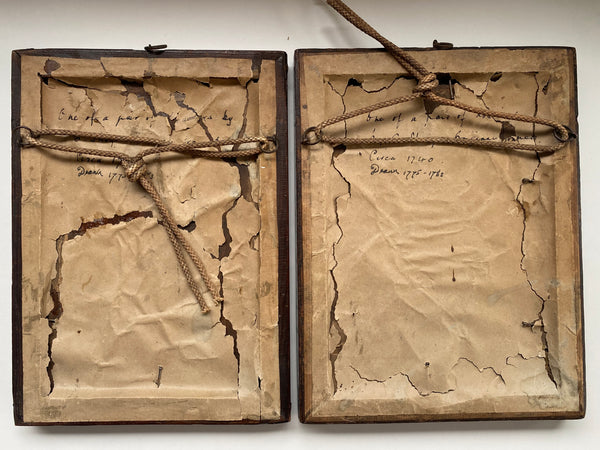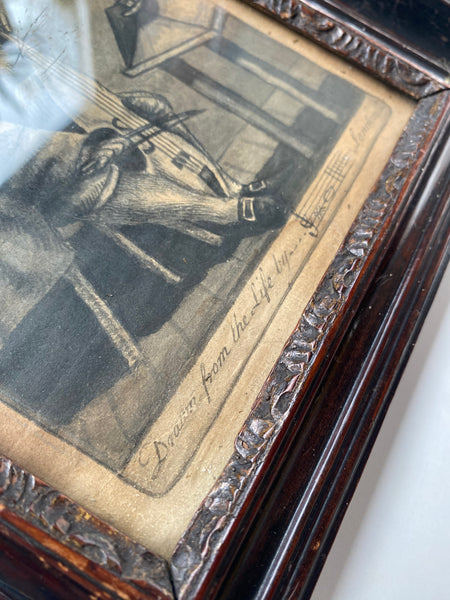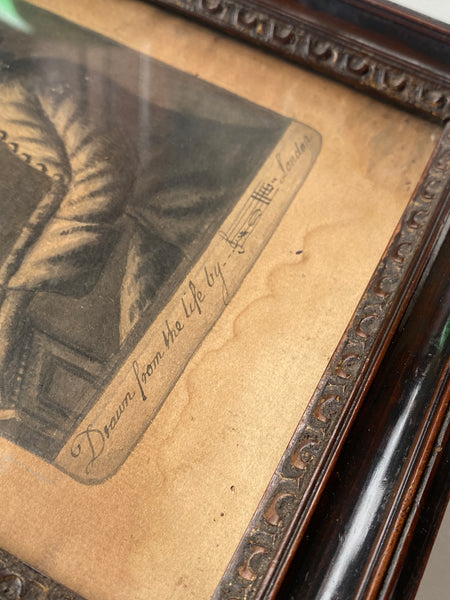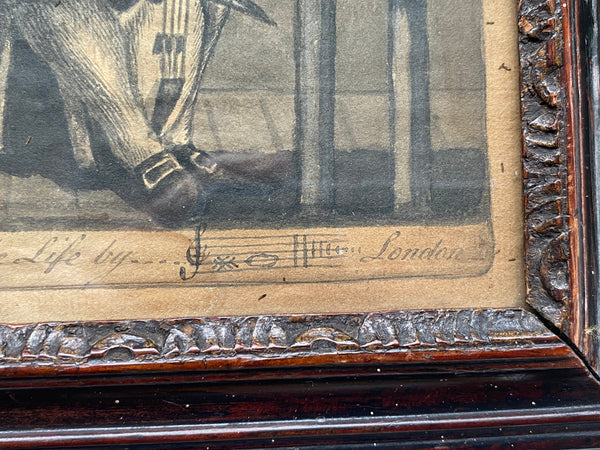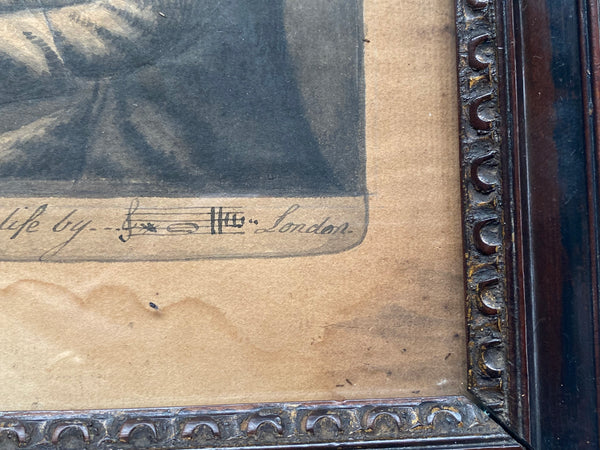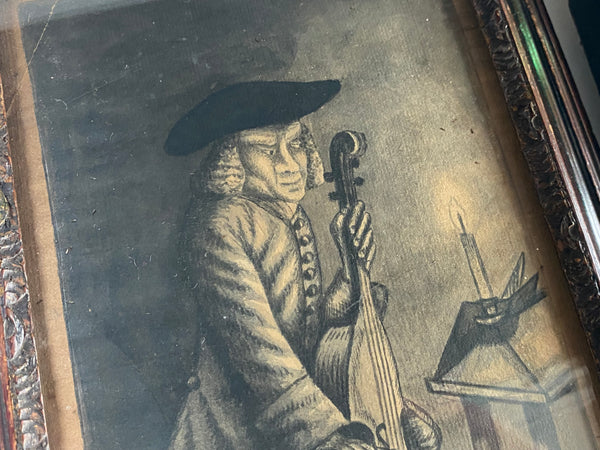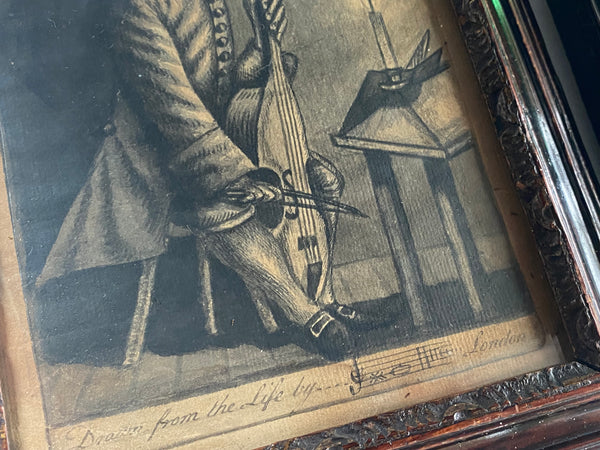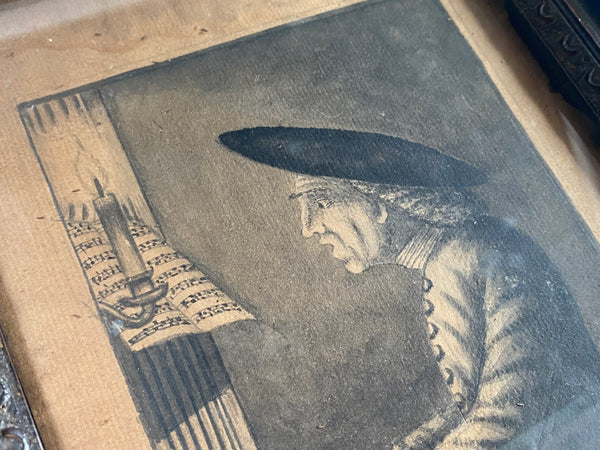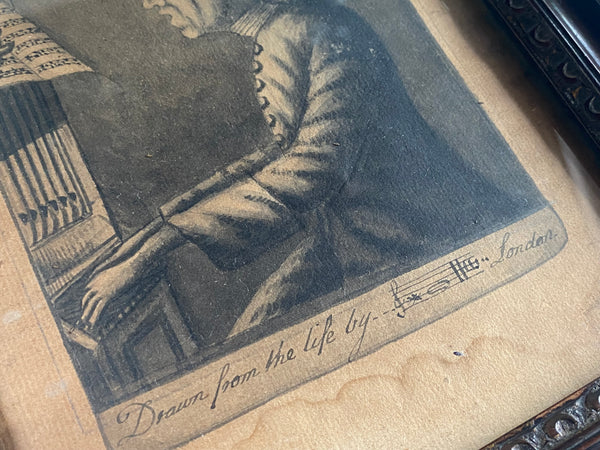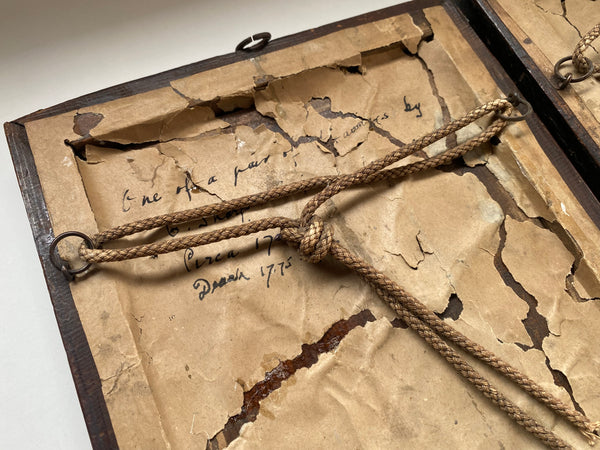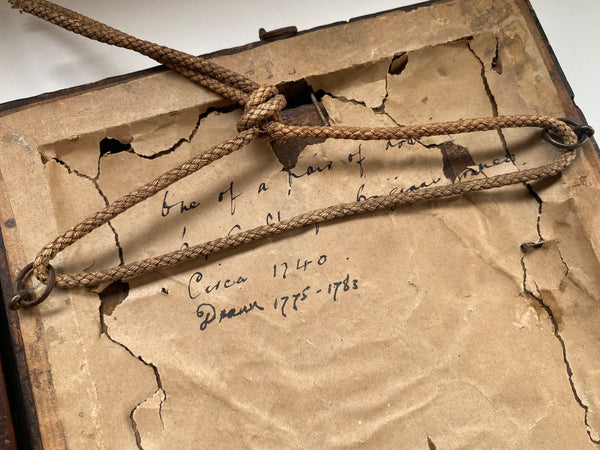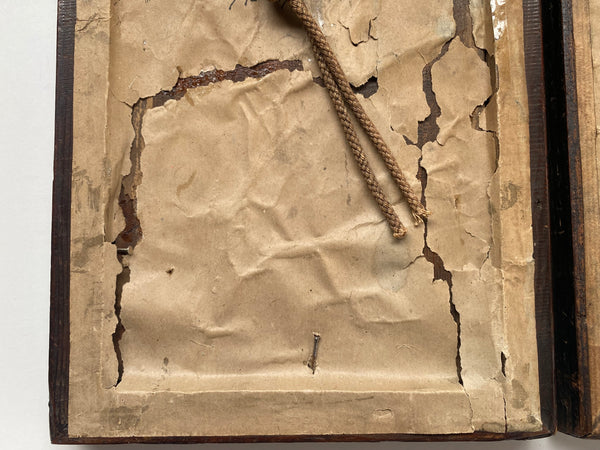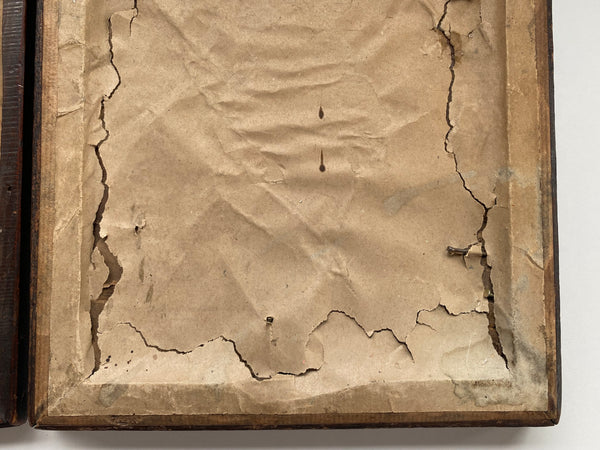Rare Pair Original Antique 18th Century Drawings By Notable Early Slave Abolitionist ‘Granville Sharp’
- FREE UK SHIPPING WITH ALL ORDERS
- INTERNATIONAL CUSTOMERS PLEASE PROCEED TO CHECKOUT FOR SHIPPING QUOTES
A Rare Pair Of Original Antique 18th Century Drawings By Notable Early Slave Abolitionist, ‘Granville Sharp’. After An Incident In 1765, Working To Abolish Slavery Became Granville’s life work.
These original drawings of two male musicians are from the mid to late 1700s. Still in their beautiful old and original frames, the musicians are caricatures and an inscription reads “drawn from the life”. What follows the inscription, is a series of symbols, resting on five horizontal lines. I learnt that Granville liked to sign letters to his friends using this same musical note, ‘G Sharp’.
Granville devoted his professional life to creating a Legal Ruling on the question of whether a slave could be compelled to leave Britain.He was heavily involved in securing the famous 1777 Ruling by the Lord Chief Justice which established that slave owners could not force slaves to return to the Colonies once they were in Britain. This Ruling was regarded by many, as the first move towards the abolition of slavery in Britain .As well as his campaign for the abolishment of slavery, Sharp also campaigned for Parliamentary Reform for better wages for labourers.In 1776, he resigned his Civil Service position in disagreement with the British Government’s War with the American Colonists.In 1787, Sharp and his friend Thomas Clarkson formed the Society For The Abolition of the Slave Trade. They later persuaded the MP William Wilberforce to become their spokesperson in Parliament.The Slave Trade was finally abolished in 1897 but Sharp and Clarkson continued to work for the complete abolition of slavery.
ABOUT GRANVILLE SHARP:
Granville came from a large family of eight and his Paternal Grandfather had been the Archbishop of York. His father was the Archdeacon of Durham Cathedral.
It appears the family were very musical and Granville along with his two brothers and two sisters played in an orchestra on the Thames from a barge between 1775 and 1783. George the Third heard Granville sing and confirmed that his was the finest voice he had ever heard. The whole Sharp family were known to the King.Granville Sharp produced a number of very important paintings featuring Granville and referring to the Abolition of Slavery. The following emerged.Whilst Granville was visiting his brother in 1765 (he was Physician to George 3rd), they heard a banging at the door. On opening the door, a black man stumbled in to the house. He was terribly beaten about the body, head and face. This man was called Jonathan Strong. Jonathan was a slave who had been badly beaten by his master and told to leave his masters house.It was Jonathan’s good fortune that he had gone to the physicians house for help and that Granville Sharp was there. Granville was appalled by what he had seen and heard and as a result of this, working to abolish slavery became his life’s work.
Condition is good, commensurate with age and use. Structurally sound with and still retaining strong imagery. Some wear to the backs where the period handwritten descriptions are.
Measures (left) 23.5cm x 17cm & (right) 24cm x 18cm
Weighs (left) 300 grams & (right) 350!grams















